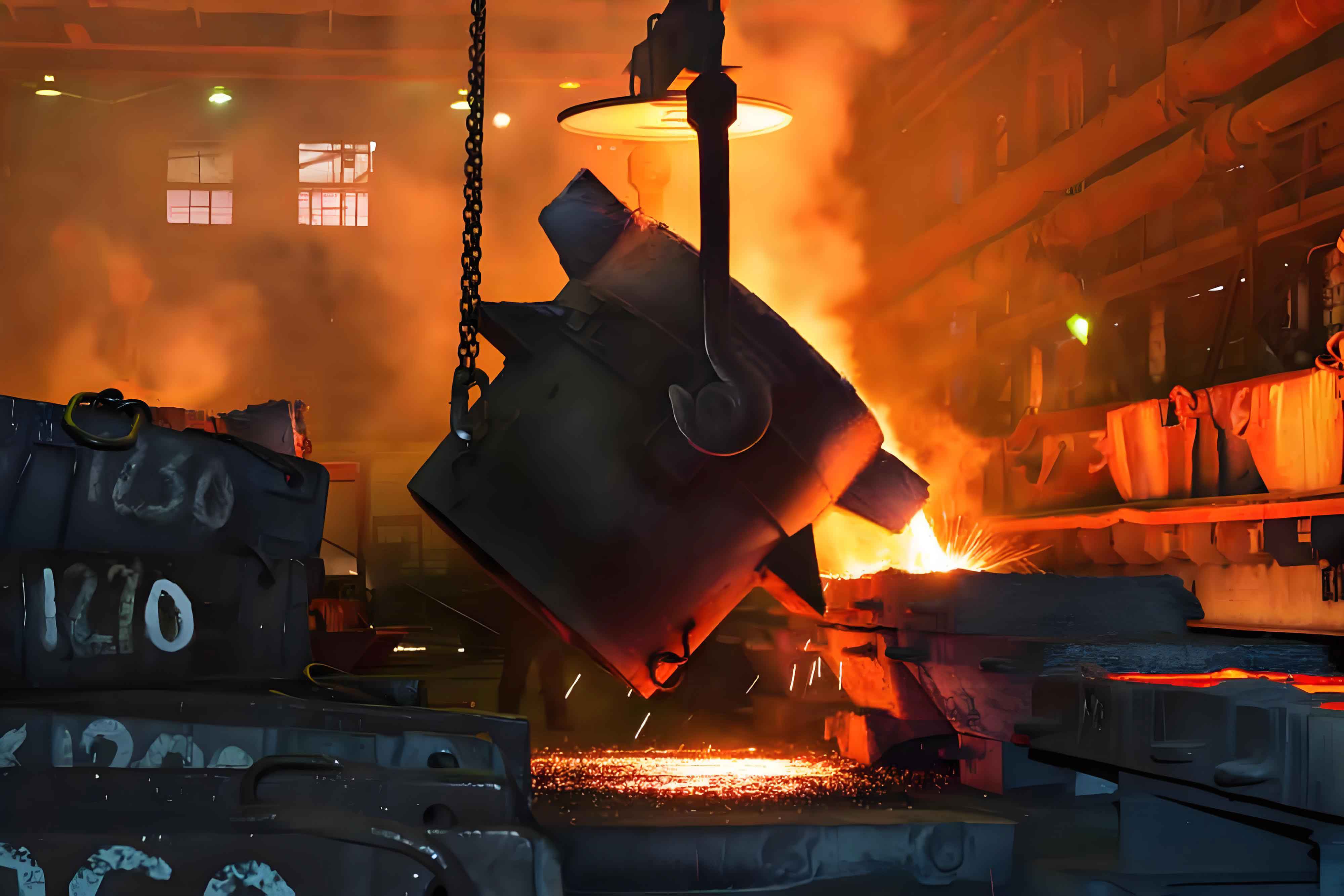
This study investigates the degradation mechanisms of grey cast iron subjected to cyclic high-temperature oxidation through systematic analysis of tensile strength, microstructural evolution, and elemental composition. The experimental results reveal critical relationships between thermal fatigue resistance and microstructural characteristics under low-frequency thermal loading conditions.
1. Thermal Cycling Protocol
Specimens of HT200 grey cast iron (composition in Table 1) underwent cyclic thermal treatments simulating industrial service conditions:
$$T(t) = \begin{cases}
25^\circ\text{C} \to 900^\circ\text{C} \ (10^\circ\text{C/min}) & \text{Heating phase} \\
900^\circ\text{C} \ (60\text{-min hold}) & \text{Oxidation phase} \\
900^\circ\text{C} \to 25^\circ\text{C} \ (10^\circ\text{C/min}) & \text{Cooling phase}
\end{cases}$$
| C | Si | Mn | P | S | Fe |
|---|---|---|---|---|---|
| 3.58 | 1.59 | 0.89 | 0.087 | 0.076 | Bal. |
2. Tensile Strength Degradation
The tensile strength evolution at different thermal cycles follows distinct temperature-dependent patterns:
| Cycles | 400°C | 600°C | 800°C |
|---|---|---|---|
| 10 | >125 | 74.95 | 29.86 |
| 30 | 85.95 | 55.65 | 24.69 |
| 50 | 45.96 | 38.09 | 19.81 |
The strength reduction follows linear relationships with carbon content:
$$\sigma_{400} = \begin{cases}
22.10C + 47.19 & \text{(Pearlite matrix)} \\
313.3C – 404.6 & \text{(Ferrite matrix)}
\end{cases}$$
3. Microstructural Transformations
Key microstructural changes during thermal cycling include:
- Graphite fragmentation: Original A-type graphite (length: 200-400 μm) breaks into sub-100 μm fragments
- Matrix evolution: Pearlite → Ferrite transition completes after 30 cycles
- Secondary precipitation: Fe3C forms at grain boundaries post 30 cycles
| Cycles | 0 | 10 | 30 | 50 |
|---|---|---|---|---|
| C (wt%) | 3.58 | 3.08 | 1.55 | 1.44 |
4. Oxidation-Induced Degradation
The oxidation process follows parabolic kinetics:
$$\frac{dx}{dt} = \frac{k_p}{x}$$
Where $k_p$ represents temperature-dependent oxidation rate constant. Graphite flakes act as oxygen diffusion channels, accelerating formation of Fe-Si-Mn oxides at flake/matrix interfaces.
5. Fracture Mechanism Analysis
Three-stage fracture evolution occurs:
- Microcrack initiation at graphite tips
- Crack propagation through oxide-weakened matrix
- Final fracture via interconnected cracks
The graphite exposure ratio ($R_{\text{exp}}$) increases with thermal cycles:
$$R_{\text{exp}} = 1 – e^{-0.15N}$$
Where N = number of thermal cycles
6. Thermal Fatigue Life Prediction
The Coffin-Manson relationship modified for grey cast iron:
$$\frac{\Delta \varepsilon}{2} = \varepsilon_f'(2N)^c + \frac{\sigma_f’}{E}(2N)^b$$
Where material constants for HT200 are:
- Fatigue ductility coefficient $\varepsilon_f’$: 0.25
- Fatigue strength coefficient $\sigma_f’$: 850 MPa
- Fatigue ductility exponent $c$: -0.6
- Fatigue strength exponent $b$: -0.09
7. Conclusion
This comprehensive analysis demonstrates that grey cast iron’s thermal fatigue resistance is governed by synergistic effects of:
- Carbon depletion rate
- Graphite morphology evolution
- Matrix phase transformation
- Oxidation-induced interfacial weakening
The derived quantitative relationships enable lifetime prediction and material optimization for grey cast iron components in thermal fatigue applications.
